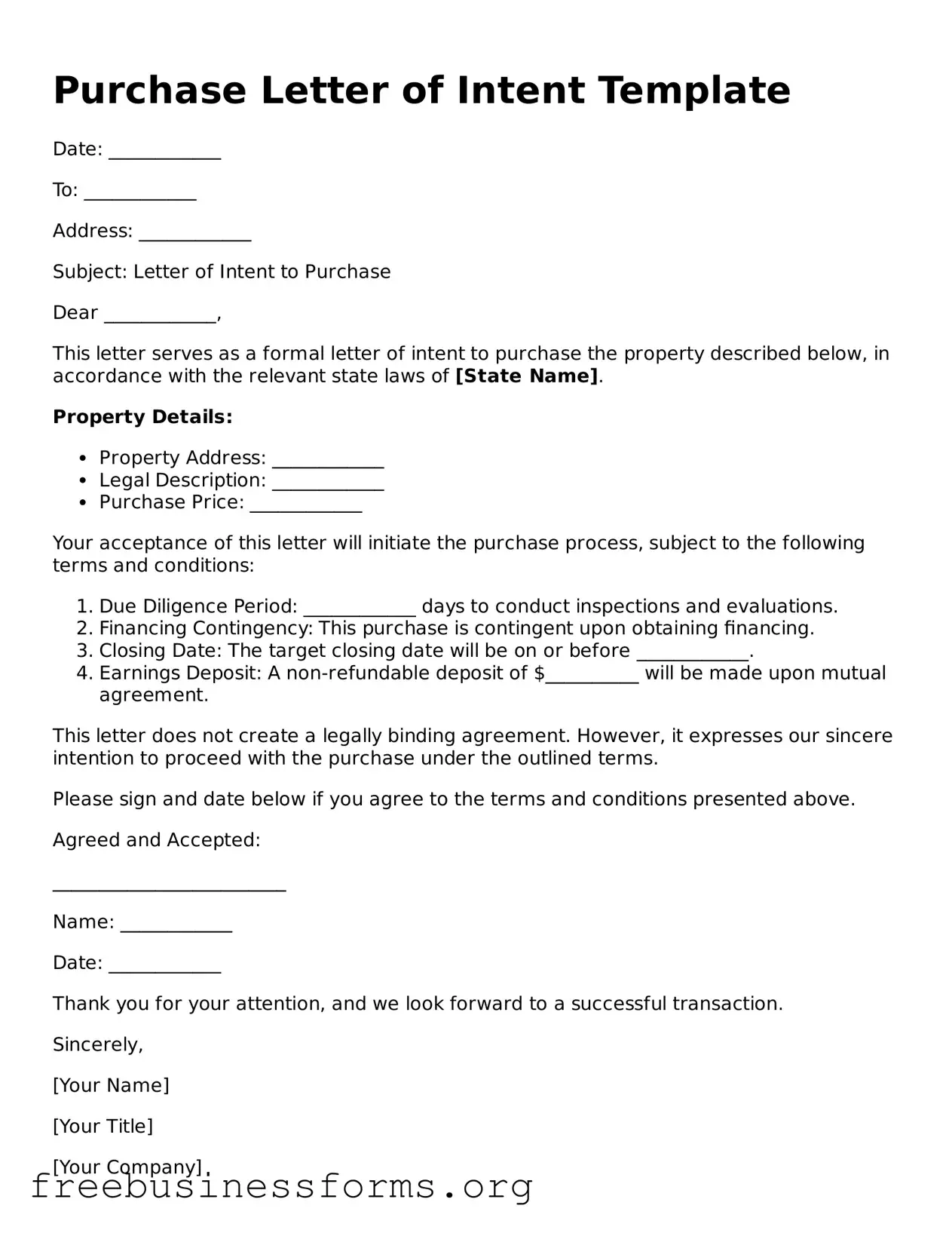Purchase Letter of Intent Template
Date: ____________
To: ____________
Address: ____________
Subject: Letter of Intent to Purchase
Dear ____________,
This letter serves as a formal letter of intent to purchase the property described below, in accordance with the relevant state laws of [State Name].
Property Details:
- Property Address: ____________
- Legal Description: ____________
- Purchase Price: ____________
Your acceptance of this letter will initiate the purchase process, subject to the following terms and conditions:
- Due Diligence Period: ____________ days to conduct inspections and evaluations.
- Financing Contingency: This purchase is contingent upon obtaining financing.
- Closing Date: The target closing date will be on or before ____________.
- Earnings Deposit: A non-refundable deposit of $__________ will be made upon mutual agreement.
This letter does not create a legally binding agreement. However, it expresses our sincere intention to proceed with the purchase under the outlined terms.
Please sign and date below if you agree to the terms and conditions presented above.
Agreed and Accepted:
_________________________
Name: ____________
Date: ____________
Thank you for your attention, and we look forward to a successful transaction.
Sincerely,
[Your Name]
[Your Title]
[Your Company]
[Your Contact Information]
